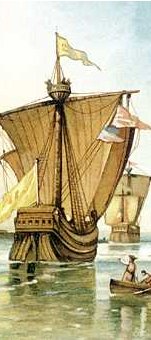from a Mexican to a
golden state Michael Meghpara
A boy growing up
in the farm town of Decatur, Illinois, Walker was inspired by the writings of Jack London,
and has written extensively about the author. He earned his degree in
journalism from the University of Texas
at El Paso. This accomplished man
is the author of twenty-three books, he has also
served as a television reporter, editor, news and information officer,
university press director, freelance writer, biographer, and historian, and is
also the past president of Western Writers of America (WWA).
The history of California
is an intricate story of conquest tied with rebellion and battle. California
was not simply taken from the Native Americans in the mid 1800s; it was stolen
from the Mexicans in a series of battles filled with bloodshed, deceit, and
alliances that altered the history of America.
Dale L. Walker¡¦s book, Bear Flag Rising exemplifies how ¡§the conquest of
California is representative of a
concept as old and arrogant as mankind¡¨1.
This concept, known as Manifest Destiny, or the belief that the America
should control the North American continent from the Atlantic
to the Pacific, was the platform of President Polk and drove many ventures into
the western frontier. Beginning with the annexation of Texas,
and then creeping its way to California,
Manifest Destiny was a new concept for an ancient idea that has steered and
muddled nearly every nation. Bear Flag Rising is not only the story of
the effects of Manifest Destiny on the frontier, it is also about the mission
of the settlers to annex the Mexican province
of Alta California by military
force, and add it to the rapidly growing United
States of America.
Walker
starts off his book with the history of California
before the American settlers began to occupy the area during the early 1800s.
It was first discovered by Juan Rodriguez Cabrillo in
1542, who came to the New World
with Hernan Cortes. While Cortes occupied himself
with the conquering of Mexico
and Mexico City, Cabrillo traveled north to the Coast of Cathay
(what is now California), charted
the land, and explored the coast. Walker
then explains how the Spanish built actual settlements 221 years later and
began establishing missions and small communities. Gaspar
de Portola brought missionaries to spread and establish the Christian religion
in California. This line of
missions is known as the El Camino Real. Moreover, this era, from 1769 to 1833
is known as the ¡§pastoral¡¨ era, due to the numerous missions throughout California.
The author then goes into further detail regarding Mexican occupation. The
Mexicans achieved their opportunity to take over California,
when the Spanish could not provide any goods to California.
These Californios (Californian-Mexicans) were
generous and gregarious people whose hospitality resonated throughout the
region. Walker then goes into
further detail about the successful settlements in California.
Sutter¡¦s Fort was a popular settlement that housed many immigrants, it ¡§lay at
the center of a much larger and even more impressive enterprise¡¨2.
This region, known as Nueva Helvetia or ¡§New
Switzerland,¡¨ was ¡§a fifty-thousand acre empire that in peak times employed
five hundred workers¡¨ for every sort of job. The town of Monterey,
a key trading port, was also a key to California¡¦s
prominence. For many years to come, foreigners and Mexicans alike would fight
over control of this key city. By giving a simple background history of Alta
California, the author is setting up the basis for the actual Bear
Flag Revolt, which occurred in 1846. As settlers began to inhabit Californian
territory, tensions begin to build between the Californios
and the American settlers.
The next part of Walker¡¦s
book describes the actual rebellion by the settlers. John C. Fremont was
initially an explorer from the East sent on an expedition to the West to
explore the Oregon Trail. He was essentially an
adventurer and a man of action. Dubbed the ¡§Pathfinder¡¨ Fremont
was the key responsible for opening the door to rebellion. Mexican General Jose
Castro had carried out orders from Mexico City
by issuing a decree ordering all American immigrants to proceed north to Sonoma.
As expected, this decree stirred much anger among the American emigrants.
Moreover, Fremont and his men moving inland posed a threat to the Mexicans.
They believed that Fremont and his ¡§army¡¨ had come to fight a war. Fremont
wrote to the Mexican consul, claiming that ¡§¡¥if [he was] unjustly attacked, [he
would] fight to extremity and refuse quarter, trusting [his] country to avenge
[his] death¡¦¡¨3. The two opposing groups
then met at both Hawk¡¦s Peak and Klamath
Lake where little blood was shed.
The author shows how small incidences led to such drastic measures. General
Gillespie had witnessed first hand the Mexican reaction to the Texas
annexation. Fearing it might lead to something a lot
bigger and more dangerous, armies and generals from the United
States were sent to defend the land. Zachary
Taylor was sent to defend the Rio Grande
and Dragoon general-to-be, Stephen Watts Kearny, had the same battle philosophy
and was sent to Santa Fe, and later
continued on to California4. The Osos (American Rebels) soon took over Mexican General
Vallejo¡¦s home, Casa Grande in Sonoma,
and captured the powerful general. They had successfully taken over the California
Republic, and William B. Ide had become its commander in chief. General Jose Castro
was sorely defeated at the Battle of Olompali in June
1846. Later, the Bear Flaggers were notified that the
United States
had declared war with Mexico
and they immediately sought to make California
a part of the United States.
On June 12, the American flag was proudly hung up at Monterey
and many other posts throughout California.
Walker tells the story as it
progresses and explains the effects after elaborating upon the causes,
eventually leading to the annexation of the Golden
State.
After the annexation of California,
Walker focuses more on the conquest
and acquisition of more land for the new state. Walker
explains the stories behind the acquisitions of various cities such as Santa
Fe, Los Angeles,
San Pascual, San Gabriel,
and even the infamous Cahuenga
Pass. In 1846, Santa Fe ¡§stood
as isolated as the outback and had once been as forbidden to outsiders as Mecca and Timbuktu¡¨5.
First arriving in Santa Fe, New
Mexico, Kearny
issued a blunt proclamation that he had come from his government to take over
those lands, which was the goal of the American government during the
Mexican-American War. Arrangements were made for garrisons to be set up and
armed to protect the land. A counterrevolt in Los
Angeles forced American troops to abandon the area;
however, they were later going to get it back. Kearny
moved on with General Gillespie to San Pascual. Here
the battle began completely by mistake, and within minutes the fight developed
into a furious battle. San Gabriel
was a battle that included a 600 man force of General Stockton and Kearny.
They traveled from San Diego to Los
Angeles and fought on the banks of San
Gabriel. Rifle fire led to canons and full on attacks.
Battles in these cities were a few examples of how the American forces exerted
their influence by dominating California.
The author then progresses to the
end of the Mexican-American War in California
by explaining the minor failures that led the famous generals to move back
east. Fremont had taken control of Los
Angeles, but he had tried to run a government with no
money. However, he returned to St. Louis
a glorious battle hero. However, he was soon arrested, for Kearny
had challenged Fremont¡¦s ¡§military,
civil, political, and moral decisions in California¡¨6.
Accordingly a court martial was held, which found him guilty of mutiny,
disobeying a superior officer, poor conduct and display of good order and
military discipline by mistreating the natives and abusing his power. He was
dismissed from service. At this point of the book, Walker
demonstrates how the focus had shifted from California
to the East Coast, signaling the end of battle and rebellion in California.
Walker¡¦s
book is an elaborate history of the annexation of California.
He explains the causes
and incidents that led to the formation of the Bear
Flag Republic
and the annexation of California
into the United States.
Starting from the very beginning of Californian history where Indians ruled the
land, he later explains how the Mexicans came to control the land. His
chronological and text-book style writing allows the reader to see California
history as it was, and leaves the reader open to formulate their own thesis and
opinions. This book accurately depicts that as time changed, people changed
too, influencing the events occurring from 1846 to 1847. Different eras have
different beliefs, and coincidentally, that era was one of conquest and
expansion. Manifest Destiny was the ¡§religion¡¨ which many Americans followed.
To fulfill this coast-to-coast dream, California
had to be taken from Mexico.
The conditions were ideal: ¡§Texas
was admitted to the Union¡KZachary Taylor¡¦s army was
poised to meet [the Mexican army], and John Charles Fremont and his rough crew were
marching into California¡¨7. By progressing through the rebellion in a
thorough and detailed manner, Walker
educates the reader on the story of the birth of California
and describes it from beginning to end.
Description is the key to accurate,
interesting, and detailed history. Walker
explains every aspect of the history of California
from start to finish, in an unbiased manner. In order to remain accurate, one
must be objective in their point of view. By doing so, the author allows the
reader to create an impression on the work rather than lay it out for them. He
is able to evoke emotion over not only the prominence of the Americans, but
also the plight of the Californios and Indians.
Richard Henry Dana, an early explorer, came to California and ¡§told of a vast,
bizarre, lazy and decadent land, immensely rich, whose people, other then a
handful of ¡¥grandees,¡¦ had no education and no initiative and seemed to be in a
geographical and cultural limbo, as if apathetically awaiting conquest¡¨8. If he needs to provide any opinions,
Walker uses external sources to
document public feelings and the situation at certain times. The book also
exemplifies Walker¡¦s
neo-conservative historiographic ideals, due to his
unbiased views and explaining the history based on the intervention of the
federal government and viewing
the U.S. as a uniquely moral, stable
country. By maintaining an objective point of view and preventing any
drastic assumptions, Walker is able
to describe the history of California
as it was rather than tell it from the filtered or biased eyes.
Although this book might seem
intriguing and informative to many people, some literary criticisms deride the
book¡¦s content. Nicholas Ivor Martin claims that the
book is written based on a very interesting topic, but is not well executed. It
states that the book is ¡§as bad as the writing is the organization¡¨ and has
¡§more or less given up on getting a gripping, tightly-knit story.¡¨ This review
also claims that the book uses one too many secondary sources to make claims
that could have been proven simpler. These secondary sources, he believes, give
too much background information, where none is actually needed. 13
However, another review by Sunny
Delaney explains that Bear Flag Rising is a ¡§thoroughly researched, engagingly
written, [and] an excellent addition to the growing list of books on the
American West.¡¨ He claims that this book shows how the leaders put their lives
at risk, and by doing so might have helped add one of the greatest states to
the United States of America.14 Although some might criticize and others might complement,
the book is a work that can be judged only by the reader. It is a story of a
history filled with interesting facts and people that were part of one of the
greatest additions to the United States.
This book was very thorough in its
description of the actual Bear Flag Rebellion. By starting from the very origin
of Californian occupation, the author gives a complete history behind the
annexation of the Golden State. He shows how initial conditions led to a
certain effect, and how the gradual progression of America¡¦s
development and dominance in California.
The author claims that he has ¡§tried, at some length to provide a picture of
pre-conquest California and to do justice to the California ¡¥side¡¦ in the
1845-47 era, especially in recounting how leaders¡Krose to oppose¡Kthe loss of
their beloved land, and their way of life, to the interlopers¡¨9.
The organization of the book progresses chronologically, and is separated into
three parts: The Coast of Cathay (pre-conquest), Bear Flag Rising, and
Conquest. The reader is able to experience history as it occurred, which
provides more clarity and understanding. Walker
successfully wrote a simple, yet sophisticated novel that informs the reader
about the history of California,
its annexation, and its consequences.
Under President Polk, the United
States experienced a period of drastic
expansionist policies. Policies in the East set out to spread the country from
the Atlantic to the Pacific. One of
the ¡§campaign slogans that helped Polk¡¦s election was ¡§Fifty-four Forty or Fight¡¨10. This slogan was used to
demonstrate Polk¡¦s desire to expand the country both west and north. The
platform of Manifest Destiny that dominated his term influenced the shape that
the United States
took after conquest and expansion. As more land was acquired, people from the
East began to move to the frontier and establish villages and cities in the
countryside. California was the
key to westward expansion. The series of battles in California
that led to its annexation exemplified the expansionist ideals of the
Americans. Eastern politics had governed the outcome of the West. Immigration
would increase greatly with the discovery of gold in 1849 at Sutter¡¦s Fort.
California
was not even regarded as potential American soil until 1846. Since Mexico
had controlled this region, its society, its culture, and its people remained
completely out of touch with American frontiersmen. The Americans had not even
entered the land until the late 1840s, with Fremont.
Moreover, Mexico
took great pride over its North American territory and ¡§regarded its Pacific
¡¥Department¡¦ as the inestimably precious jewel in its colonial crown and
dreaded the prospect of losing it¡¨11. They
protected it from foreign intervention at all costs. Even when the Americans
entered, the Mexican generals eagerly tried to push the Americans off the land,
eventually leading to tension, then rebellion, and then war. California
was the key to fulfilling America¡¦s
dream of Manifest Destiny, and once it was annexed, America
had spread from sea to shining sea. This new state would serve as an important
frontier state where many Americans would emigrate to. Also, it opened up America
to the Pacific and opened up American trade to both Europe
and Asia. Later, California
would also be a significant economic asset during the Gold Rush in 1849. California
was an addition that contributed to the prominence of the United
States and justly acquired its title of the
¡§Golden State.¡¨
California
has a history as complex and intricate as a maze. From the very beginning,
starting with Spanish occupation, California
was a popular destination due to its ideal location and nature. After the
Mexicans had taken over, they enjoyed just a few years of isolation before the
Americans began to interfere and start their own conquest of the territory. To
fulfill the United States¡¦
hunger for more land, President Polk sent explorers and generals, Fremont and Kearny
respectively, to help take California
from the Mexicans and annex it as a state. The contentious men ¡§around whom the
spectacle of the conquest tumbles and swirls like a Mojave dust devil, and the
color and drama of the California
conquest¡¨ preoccupy a majority of Bear Flag Rising12.
Battles were filled with deceit, deception, and treachery; and conquest was
dominated by greed and lust for land.
1. Walker, Dale L.. Bear Flag
Rising: The Conquest of California,
1846. 1st. New York: Tom Doherty Associates , 1999.
2. Walker (13)
3. Walker (46)
4. Walker (94)
5. Walker (110)
6 ..Walker
(178)
7. Walker (279)
8. Walker (68)
9. Walker (22)
10. Walker (15)
11. Walker (59)
12. Walker (41)
13. Walker (15)
14. Martin, Nicholas. "Story May Be Fascinating Just Not
This Version ." CNN 22 September 1999 1 Jun 2008 <http://www.cnn.com/books/reviews/9909/22/bear.flag/ index.html>.(Par 5)
15. Delaney, Sunny. Netstate 14
June 2007 1 Jun 2008 <http://www.netstate.com/states/bkstore/ ca_bk.htm>.
(Par. 2)










